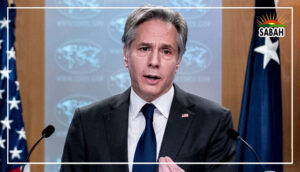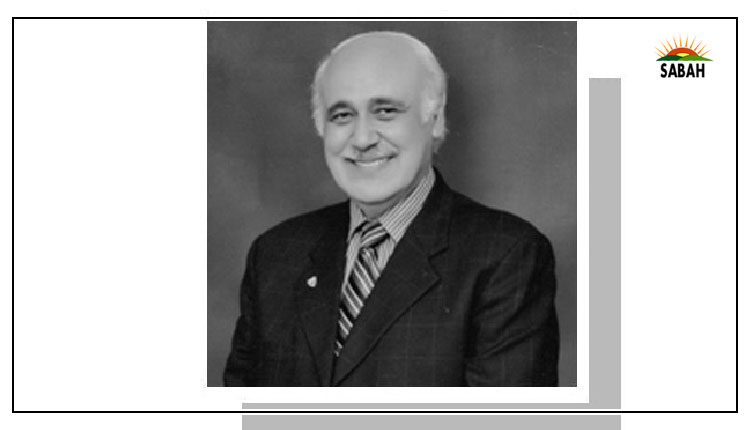At last… …F.S. Aijazuddin
KING Charles III and I have waited 70 years for this. The last coronation he and I saw was that of his mother Queen Elizabeth II on June 2, 1953. He, a five-year old, sat in the Royal Box in Londons Westminster Abbey. I, an 11-year-old, watched the colourful ceremony on a small black and white television set at my Prep school in Pangbourne, Berkshire.
The 1953 coronation was more than a spectacle. It allowed the war-weary British to demonstrate that they had emerged finally from drab war-time constraints. They could look towards a brighter future, a second Elizabethan era. And as the British tend to do on such moments of national cohesion, they did so by reverting to their historic past.
Everything about the 1953 coronation bore the weight of symbolism the heavy crowns (Jewels are after all only stones, the Queen noted), the sceptre containing the largest of the Cullinan diamonds fragments, the golden orb symbolising the Christian world, and the ancient wooden throne of King Edward, made in 1296.
Beneath its seat is the equally ancient Stone of Destiny (said to be the Prophet Jacobs pillow), appropriated from the Scots as the Kohinoor once was from the Punjabis in 1849. The stone was stolen by Scottish nationalists in 1950. It is lent to England for coronations. It has been sent southwards for Charless coronation by Scotlands First Minister Humza Yousaf.
The coronation ceremony is essentially a religious ritual, during which the monarch is anointed with consecrated oil in imitation of the anointing of King Solomon. That part of the ceremony is held in privacy below or behind a canopy.
The 1953 coronation, at Prince Philips insistence, was televised live. Therefore, it had to be well-rehearsed by hundreds of supporting nobles, guardsmen, men at arms, even the Queen herself.
Everything had a significance. The dresses of the maids of honour had embroidery accented on the back rather than the front, as that would be more visible to the camera.
Similarly, the Queens heavily encrusted dress (designed by Norman Hartnell) contained four national emblems Englands rose, Scotlands thistle, Irelands shamrock, even Waless mundane leek. Nearer the hem were included symbols of the distant dominions Canadas maple leaf, Australias wattle, New Zealands silver fern, South Africas protea, lotus flowers for India and Ceylon, and for Pakistan wheat, cotton and jute.
The 1953 ceremonies were flawless in their execution, unlike some of the mishaps that occurred in previous coronations. The young Queen Victoria in 1838 had to endure excruciating pain because the Archbishop of Canterbury forced the Coronation ring on the wrong finger.
King Edward VIIs coronation in 1902 had to be postponed because the king suffered an attack of appendicitis. At the actual ceremony, the unsteady Archbishop Temple dropped holy oil on the nose of Queen Alexandra.
In 1911, a wary Queen Mary, as a precaution, had a pocket for a small handkerchief inserted behind the embroidered rose on her dress.
In 1953, rain forced the VIPs to raise the covering of their carriages except for the genial Queen Salote of Tonga who, braving the weather, waved with undiminished dignity at the sodden spectators.
The coronation of King Charles III and his Queen Consort Camilla, scheduled for May 6, by comparison to earlier coronations, is likely to be a shorter, muted affair. The drive by coach from Buckingham Palace to Westminster Abbey and back will follow a truncated route. Queen Elizabeth recalled that she had to traverse almost half of London.
Charless procession will go down the Mall, through Admiralty Arch, and along Whitehall past the Banqueting Hall, the site of the execution of his namesake King Charles I in 1649. The splendid but uncomfortable golden coronation coach will be used only for the return journey to Buckingham Palace.
King Charles has made every effort to make his coronation inclusive. The canopy that will be used during his anointing ceremony has been specially embroidered, like his mothers dress, to incorporate symbols of the dominions and Commonwealth countries. The golden orb an emblem of Christian supremacy though will be at obvious variance with his insistence that he wants to be Defender of Faiths, not only Defender of the Faith. Many royalists will rejoice at the replay of tradition. Some may even see this as a dress rehearsal of the coronation of King William V and Queen Catherine, whenever.
Diana loyalists, however, will share the regret the dowager Queen Alexandra expressed at the coronation of her second son as George V in 1911. Her elder son Albert Victor (then heir presumptive) had died of pneumonia almost 20 years earlier. To the embarrassment of the new king and queen, Alexandra wandered around Sandringham House, muttering: It should have been Eddy.
Courtesy Dawn












